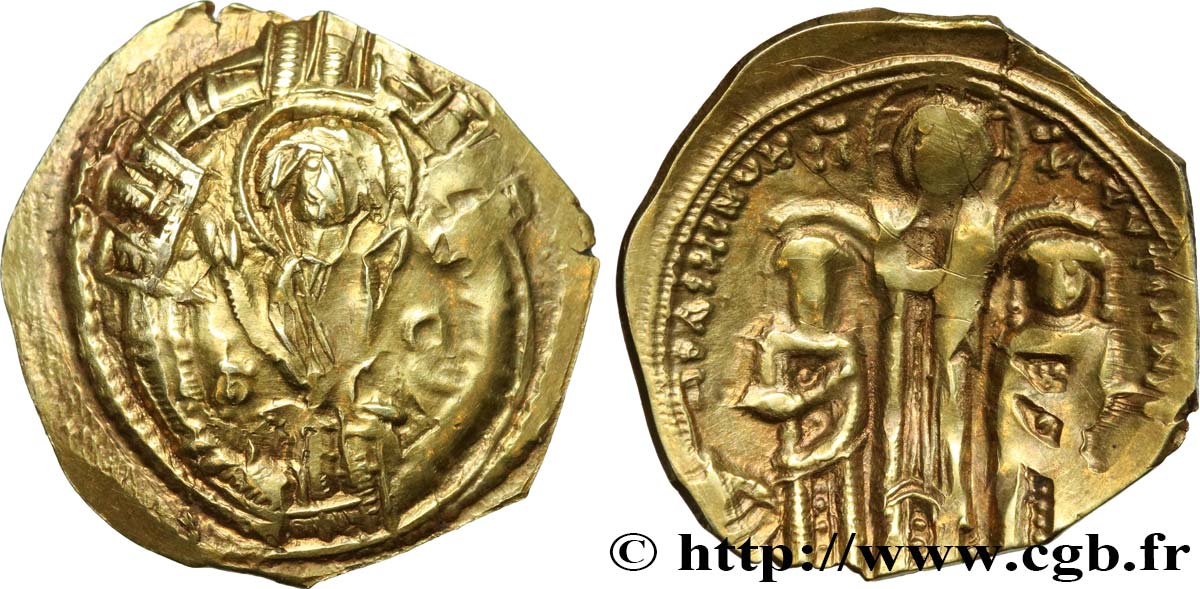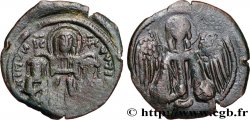bby_535296 - ANDRONICO II PALEOLOGO e MICHELE IX ANDRONICO II Hyperpère
non disponibile.
Articolo venduto sul nostro negozio (2020)
Prezzo : 350.00 €
Articolo venduto sul nostro negozio (2020)
Prezzo : 350.00 €
Tipo : Hyperpère
Data: 1295-1320
Nome della officina / città: Costantinopoli
Metallo : oro
Diametro : 22 mm
Asse di coniazione : 6 h.
Peso : 2,93 g.
Grado di rarità : R2
Commenti sullo stato di conservazione:
Exemplaire sur un petit flan quadrangulaire, irrégulier, bien centré des deux côtés. Frappé avec un coin usé, mais particulièrement bien lisible sur les légendes au revers. Belle patine rougeâtre
N° nelle opere di riferimento :
Pedigree :
Cet exemplaire provient de MONNAIES 45, n° 898
Diritto
Titolatura diritto : ANÉPIGRAPHE.
Descrittivo diritto : La Vierge rayonnante de face ; autour, les murailles de Constantinople ; double grènetis.
Rovescio
Titolatura rovescio : IC - XC.
Descrittivo rovescio : Andronicus II à gauche et Michel IX à droite couronnés par le Christ debout de face ; double grènetis.
Legenda rovescio : AUTOKATO
Traduzione rovescio : (Jésus Christ/ rois des Romains).
Commento
Poids excessivement léger. Or jaune. Flan bombé (scyphate). H. Berk signale que ce type doit être rendu à Andronicus II et Andronicus III Paléologue entre 1325, date à laquelle il fut associé au pouvoir par son grand-père et 1334, date de la disparition du monnayage. Le dit grand-père est décédé deux ans plus tôt, mais continue à être associé au monnayage.
Excessively light weight. Yellow gold. Domed flan (scyphate). H. Berk reports that this type must be attributed to Andronicus II and Andronicus III Palaeologus between 1325, when he was associated with power by his grandfather, and 1334, when the coinage disappeared. The said grandfather died two years earlier, but continues to be associated with the coinage
Excessively light weight. Yellow gold. Domed flan (scyphate). H. Berk reports that this type must be attributed to Andronicus II and Andronicus III Palaeologus between 1325, when he was associated with power by his grandfather, and 1334, when the coinage disappeared. The said grandfather died two years earlier, but continues to be associated with the coinage








 Segnalare un errore
Segnalare un errore Stampate la pagina
Stampate la pagina Condividi mia selezione
Condividi mia selezione Fai una domanda
Fai una domanda Consegnare / vendere
Consegnare / vendere
 Descrittivo
Descrittivo




